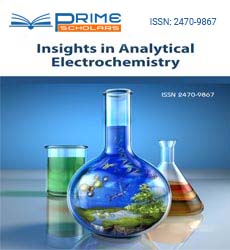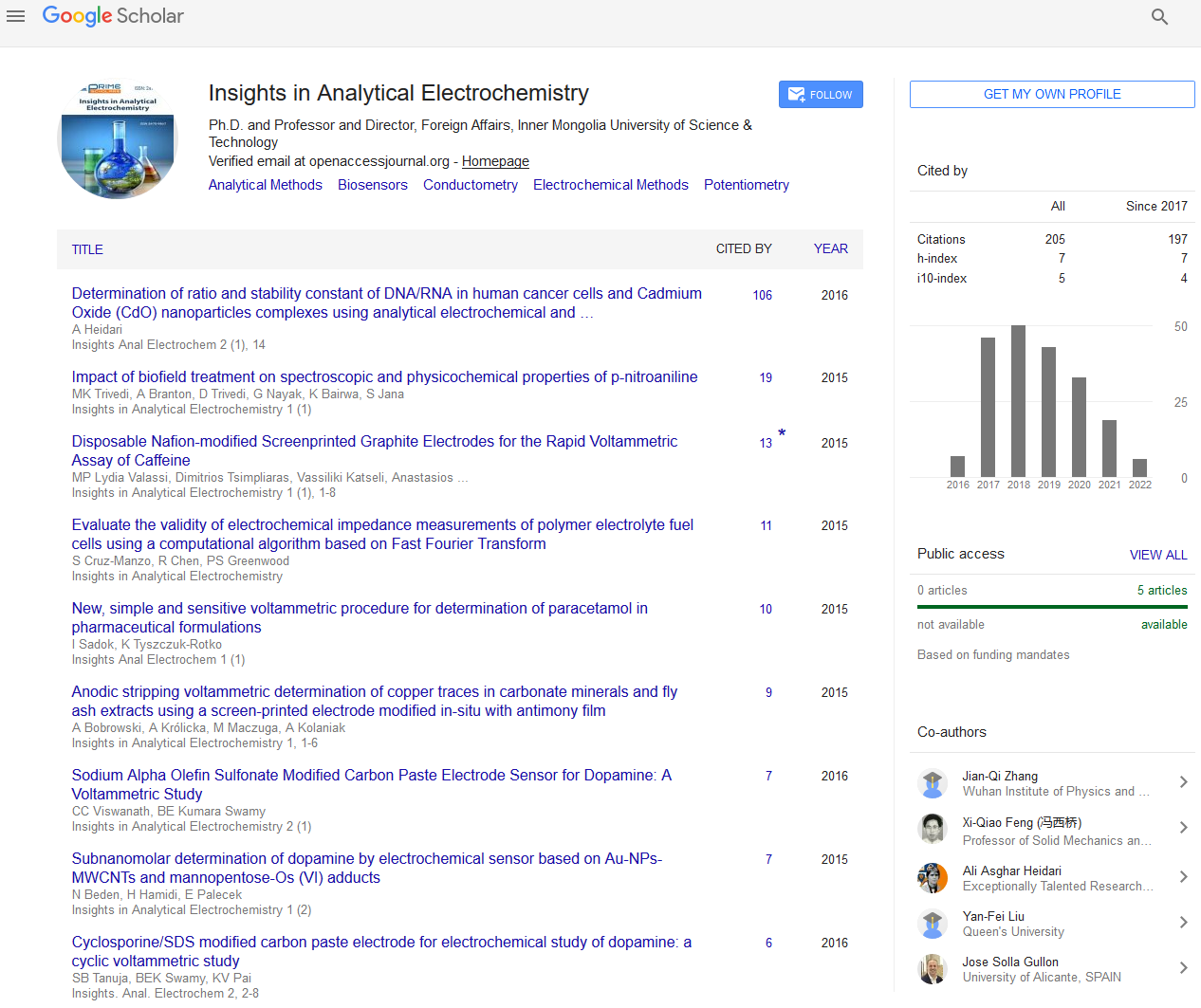Opinion - (2022) Volume 8, Issue 2
Electrochemical Impedance Spectroscopy and a Significant Electro-chemical Strategy
Bruce Leemin*
Department of Chemistry, University of Queensland, Australia
*Correspondence:
Bruce Leemin, Department of Chemistry, University of Queensland,
Australia,
Email:
Received: 02-Mar-2022, Manuscript No. ipaei-22-13137;
Editor assigned: 04-Mar-2022, Pre QC No. ipaei-22-13137 (PQ);
Reviewed: 18-Mar-2022, QC No. ipaei-22-13137;
Revised: 23-Mar-2022, Manuscript No. Ipaei-22-13137(R);
Published:
30-Mar-2022, DOI: 10.21767/2470-9867-8.2.9
Introduction
Impedance spectroscopy has been generally applied over the
course of the past a very long time to concentrate on electrochemical
frameworks and strong state gadgets. Notwithstanding,
performing impedance spectroscopy on arising photovoltaics
presents new difficulties connected with the uncommon
material properties and complex gadget structures. This audit
gives a prologue to impedance spectroscopy for specialists in
photovoltaics and firmly related fields. The survey starts with
a rundown of reasonable rules for performing estimations and
investigating information.
Description
Impedance (Z) is very like obstruction: it is a proportion of the
capacity of a circuit to oppose current. Obstruction is an idea
for ideal resistors, yet many circuits are more complicated (they
don’t by and large adhere to Ohm’s Law, free of recurrence, no
stage shift among current and voltage signals), so impedance
is utilized to supplant opposition all things being equal. Impedance
considers every one of the contemplations restricted
to an ideal resistor and different factors like inductance, opposition,
and capacitance. During electrochemical impedance
spectroscopy (EIS), an AC voltage is applied to an example at
various frequencies and the electrical flow is estimated. Impedance
(Z) can then be determined as the proportion of the
recurrence subordinate potential (E) to the recurrence subordinate
current (I). This strategy takes into account numerous recurrence
estimations. It very well may be utilized to test different
electrochemical cycles occurring simultaneously, electron
move pace of response, dissemination restricted responses, or
capacitive way of behaving of a framework. A portion of the
utilizations of EIS incorporates distinguishing consumption of
metals, describing maturing of food, estimating bacterial fixation in name free biosensors, and concentrating on particle
portability in batteries and supercapacitors.
Electrochemical Impedance Spectroscopy (EIS) acquired a ton
of consideration over the most recent 10 years. It is for a long
time very well known. One explanation is that EIS permits isolating
the impacts of various parts that implies the commitment
of the electron move obstruction, twofold layer limit, and so
on. Another is that EIS is extremely surface delicate, which rolls
out numerous improvements noticeable that different procedures
don’t have any idea, for instance changes in polymer layers
because of expanding, surface changes because of protein
adsorption or infiltration of erosion security layers. Accordingly
EIS is intriguing for scientific electrochemistry, since particles
can be identified without a redox dynamic marker.
Electrochemical impedance spectroscopy (EIS) is a significant
electrochemical strategy in light of the interfacial response
at the anode surface. Like voltammetry, when the immobilized
immunizer or antigen on the anode shapes the neutralizer
antigen complex, it goes about as a layer that keeps redox
species from diffusing to the terminal. This is a reason for the
adjustment of capacitance, prompting an adjustment of the
electrochemical impedance of the terminals. Accordingly, like
voltammetric immunosensors, EIS-based immunosensors can
accomplish mark free recognition of targets.
Conclusion
Electrochemical impedance is typically estimated by applying
an AC potential to an electrochemical cell and afterward estimating
the current through the phone. Expect that we apply
a sinusoidal likely excitation. The reaction to this potential is
an AC current sign. This ongoing sign can be investigated as an
amount of sinusoidal capacities.
Citation: Bruce L (2022) Electrochemical Impedance Spectroscopy and a Significant Electrochemical Strategy. Insights Anal Electrochem.8:9
Copyright: © Bruce L, et al. This is an open-access article distributed under the terms of the Creative Commons Attribution License, which permits unrestricted use, distribution, and reproduction in any medium, provided the original author and source are credited.

